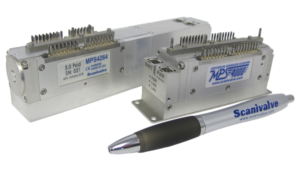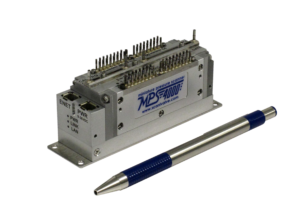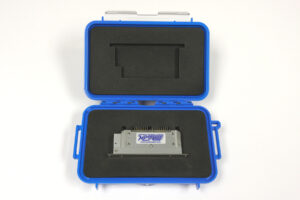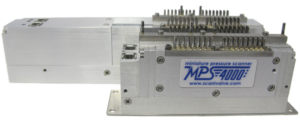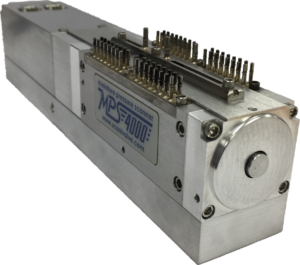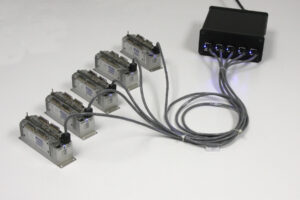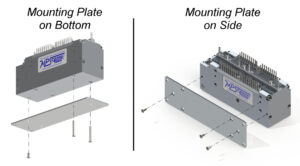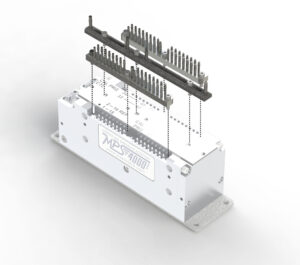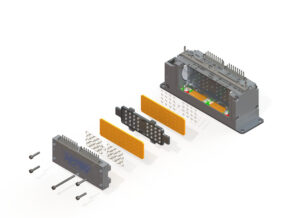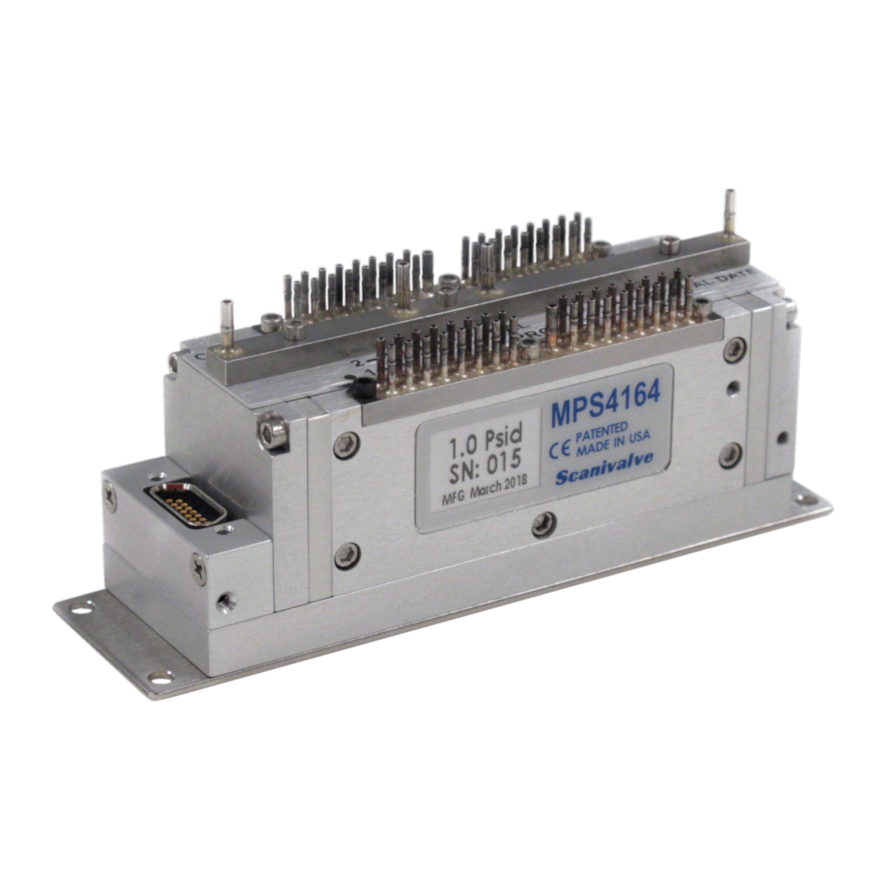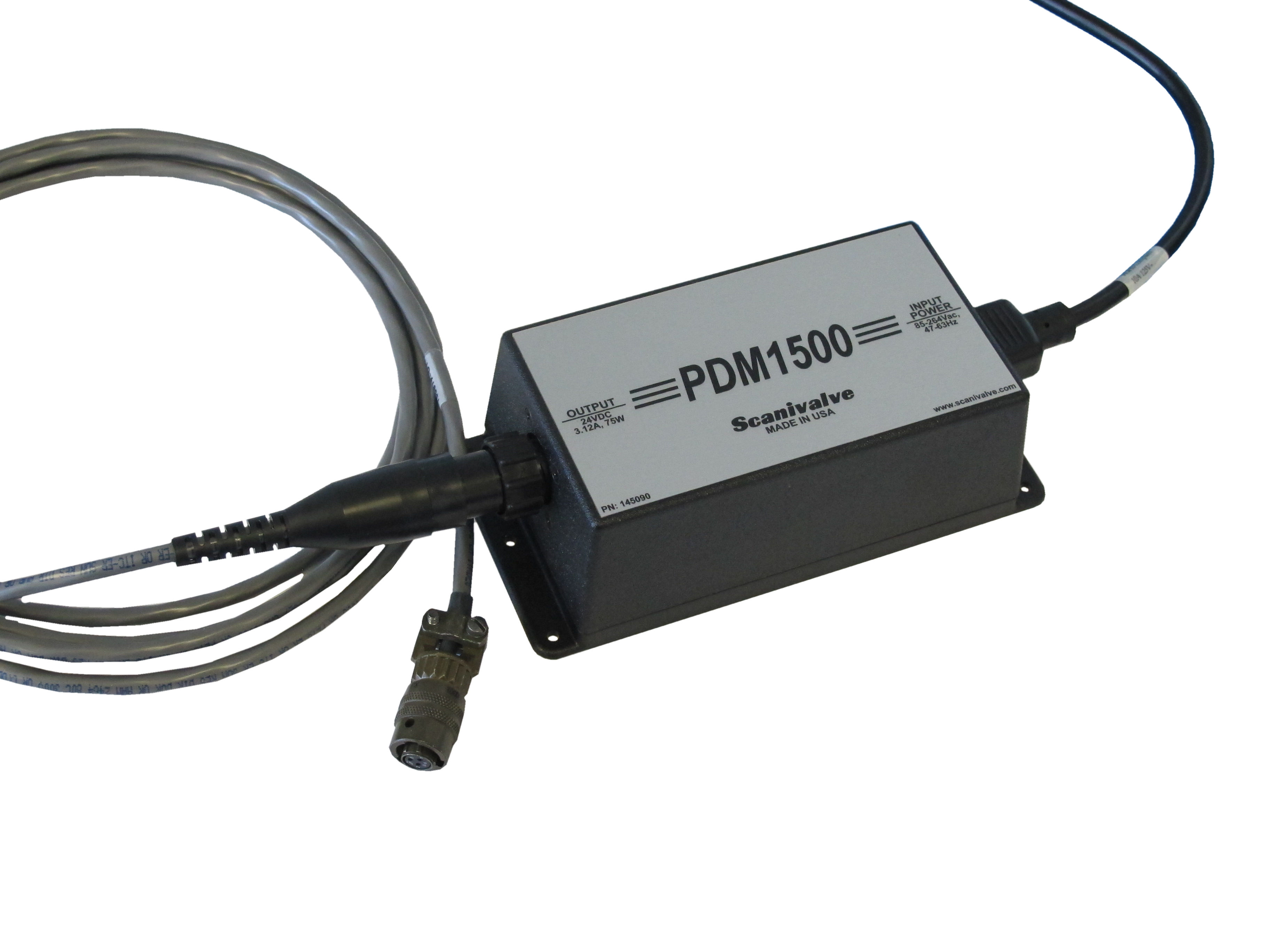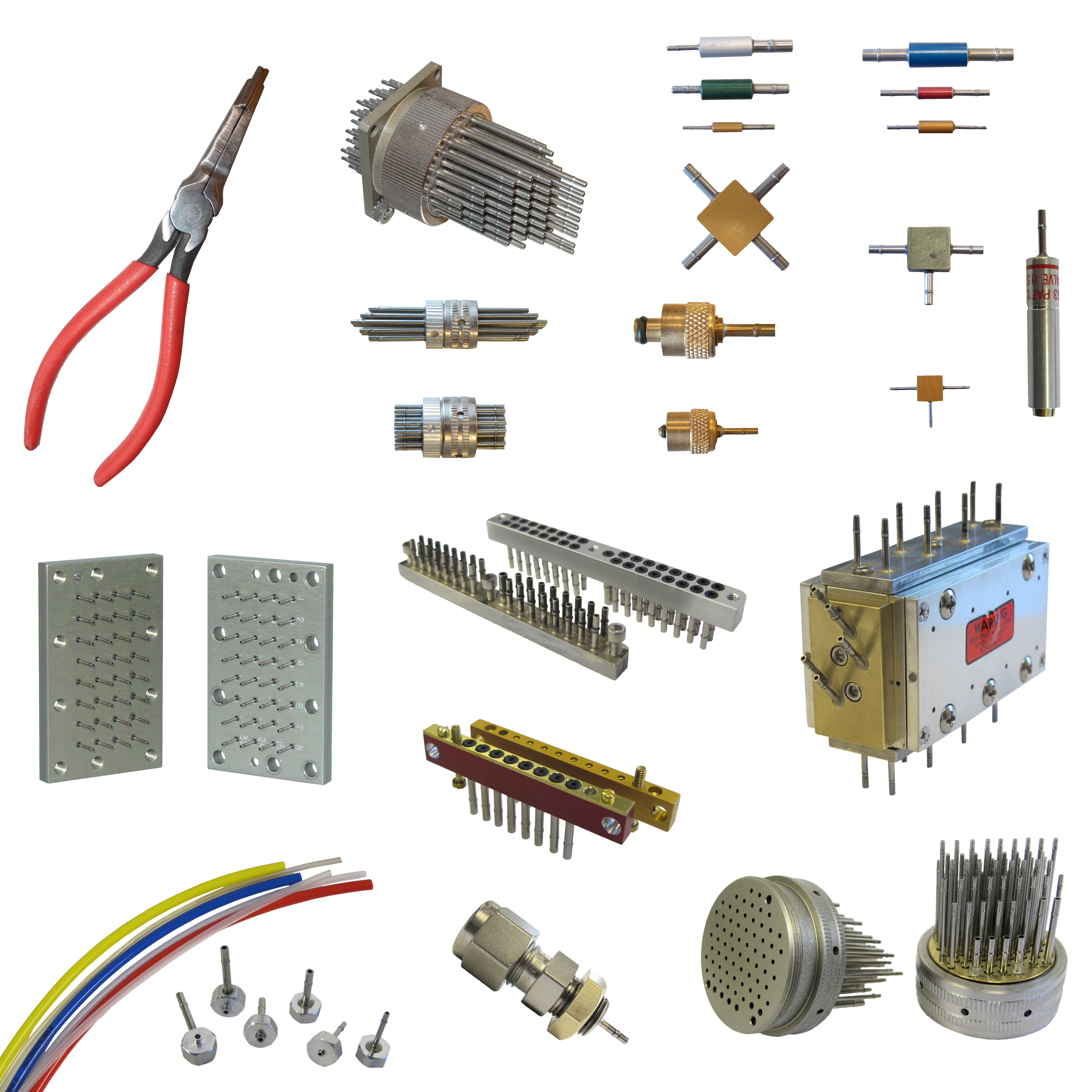Miniature Intelligent 64-Channel Ethernet Pressure Scanner
Features and Specifications
- Engineering Unit Data Stream up to 850Hz (Samples/Channel/Second), 2500Hz in “Fast Mode”
- ±0.06% Full Scale, Long Term Accuracy
- 0 – 50psi Pressure Range
- Normal Px (NPx), Control Px (CPx) or Electric (EPx) valve control
- IEEE1588-2008v2 PTP Compliant
- 24-bit A/D Converters
- Removeable input header
- Integrated Web Server
- Simple LabVIEW® integration
Overview
The MPS4000 miniature pressure scanner has been designed from the ground up to be a ‘game changer’ in the world of multi-channel miniature pressure measurement. Scanivalve has spent years developing a product that will exceed expectations where collecting high speed / high accuracy data is paramount, and space limitations are a consideration. The MPS scanner is a complete data acquisition system simply requiring a low current dc power source (9-36Vdc) and an Ethernet connection. It has a very small footprint, TCP/IP connectivity, IEEE1588 support, and a wealth of other innovative features. The entire MPS4264 scanners is built around a brand new ultra-stable pressure sensor. Scanivalve has worked directly with a leading pressure sensor manufacturer to develop a custom packaging solution that allows us to maximize the transducers’ stability and accuracy. Eight (8) digital temperature chips have been integrated directly onto the pressure transducer circuit board to provide very accurate temperature compensation/correction.
Another significant improvement and feature of the MPS is the new valve design. The new valve was ultimately designed to be maintenance free. The valve can be ordered in different configurations; the normal (NPx) version of the valve which defaults to the measurement mode and eliminates the need for any control pressure source except when changing the module state into Calibration / Purge mode. This can greatly simplify the system architecture and eliminate the need for multiple valves and a constant source of ‘muscle’ pressure. The second configuration, which is legacy compatible, is the CPx, or Control Px. This allows the MPS/CPx modules to be installed alongside legacy products which require control pressure to be applied to switch into Measurement or Calibration / Purge mode. The third valve configuration is the Electric valve (EPx). The EPx configuration allows for the valve state to be changed by using a simple software command, eliminating the need for pneumatic control pressures. This configuration is optimal when pneumatic control pressures are inconvenient or impossible to use.
The MPS4264 is easy to use and will quickly integrate into your system. There is an integrated web server allowing the user to configure and operate the unit(s) from any device on the network. Those wanting to use a LabVIEW® interface will be pleased to find the MPS was designed with this in mind and sample VI’s are available upon request.

Applications
The MPS4264 is a versatile scanner, designed for a wide range of applications. It was specifically designed for use in wind tunnel and flight test applications where operational conditions are very space constrained and pressures to do not exceed 50psi. It is also ideal for use in small supersonic wind tunnel models, where the scanner can be installed in the model or test article. This allows the tubing lengths from the testing ports to the module to be as short as possible. The user-friendly interface, simple operation, and low overhead requirements also make it ideal for educational facilities, small research and development projects, automotive testing, and other quick tests with large channel counts. Also available for the MPS is a Thermal Control Unit (TCU) designed to protect the MPS in harsh environments and provide temperature control when the module may be subjected to extreme temperatures.
The MPS4264 can be used in applications such as:
-
- Low pressure wind tunnel studies
- Boundary layer measurements
- Automotive aerodynamic studies (wind tunnel or on-car)
- Wind and building engineering
- Flight performance and testing
- Educational and research facilities
- And many more

Downloads
-
- MPS4264 Hardware & Software Manual
 (7 MB)
(7 MB) - MPS4264 Data Sheet
 (2 MB)
(2 MB)
- MPS4264 Hardware & Software Manual
3D Models
-
- MPS4264 CPx 3D Models
 (37.9 MB)
(37.9 MB) - MPS4264 NPx 3D Models
 (41.1 MB)
(41.1 MB) - MPS4264 EPx 3D Models
 (10 MB)
(10 MB)
- MPS4264 CPx 3D Models

